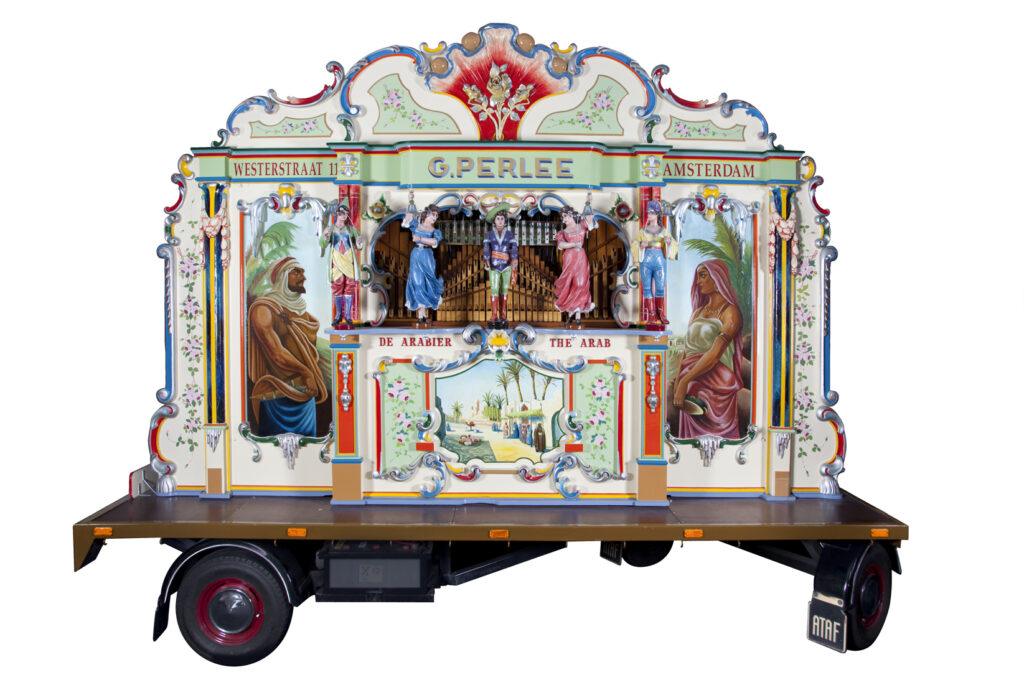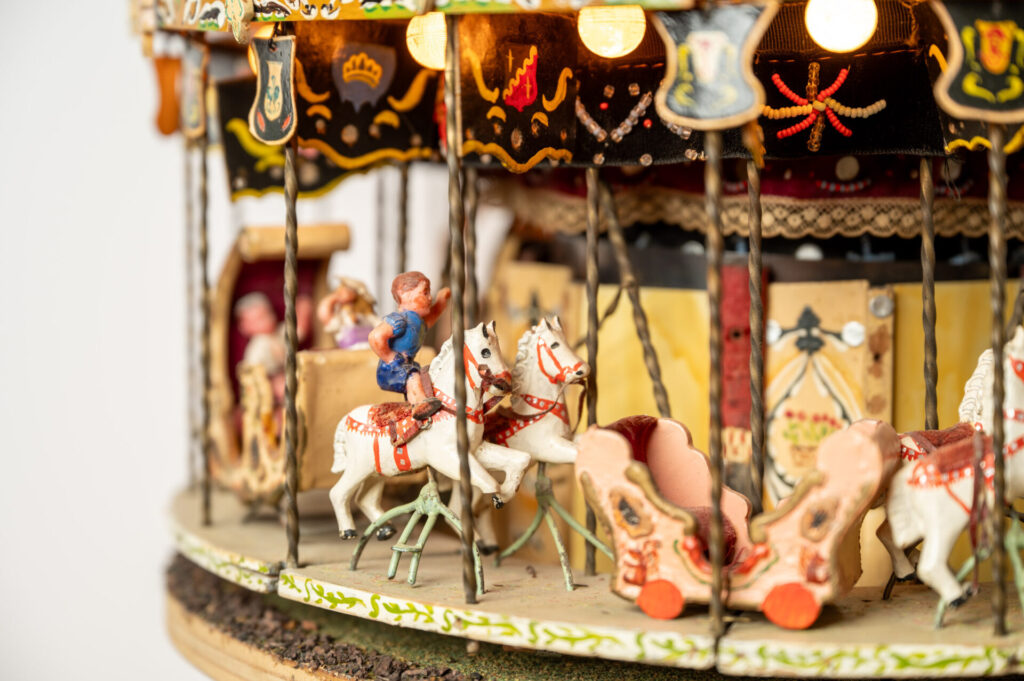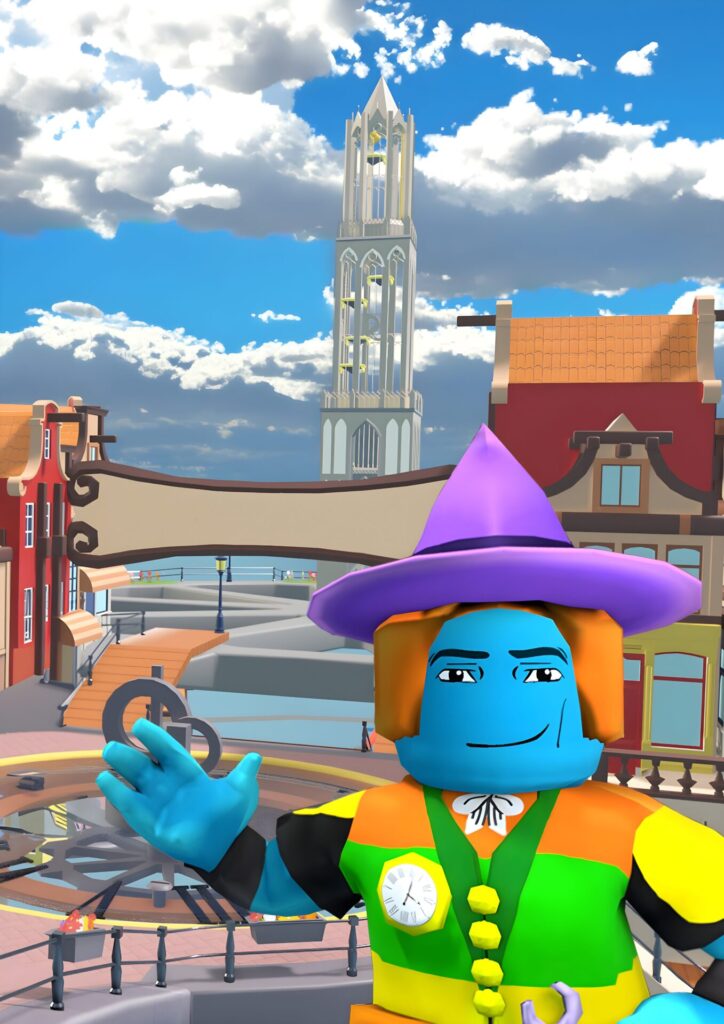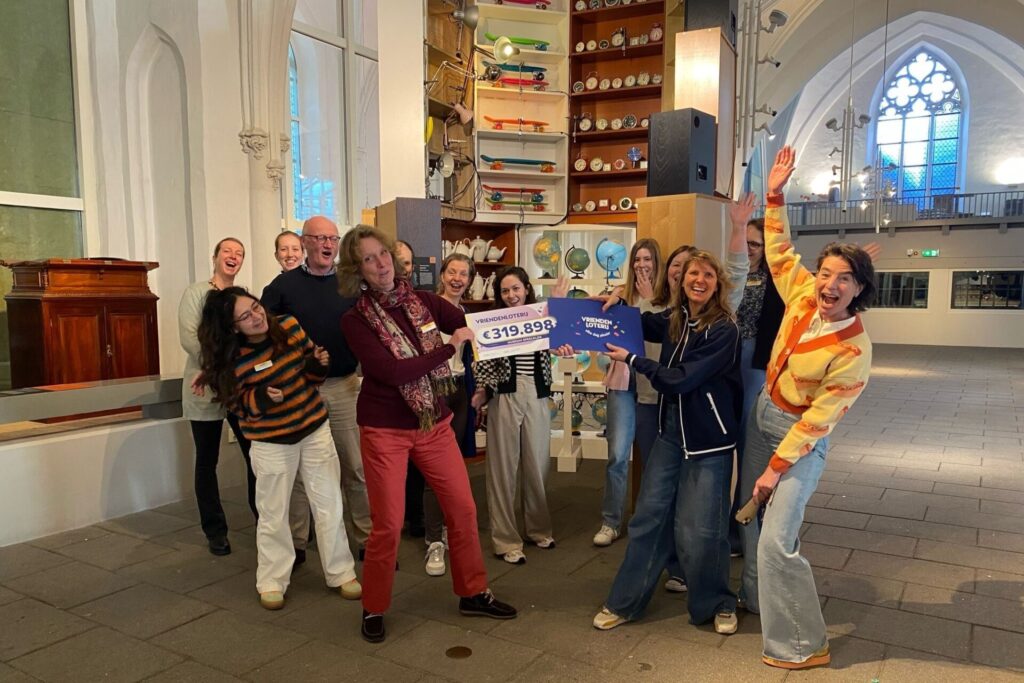Street organ the Arabier back in the museum
Friday, 3 October was a big day for Museum Speelklok. After two years of restoration, the famous street organ known as the Arabier made its festive return.


During the concert evening of the Kring van Draaiorgelvrienden (Barrel Organ Friends Association) on Friday 3 October, the Arabier (the Arab) was on display and could be heard for the first time in two years at Museum Speelklok. The restoration of the Arabier took place at the Restoration studio of the museum. Built in 1928, the street organ has a rich history. It contains organ books ranging from classical pieces by Bach to pop music. Since 2008, it has been on display at the Museum Speelklok.
The Arabier in Groningen
Mrs Winters-Elderman provided a special and moving moment during the evening. In her speech, she spoke about her father, Mr. Elderman. From 1952 to 1977, he was the operator of the Arabier in Groningen. During that time, the organ gained widespread fame thanks to the many gramophone records that were made of it. Romke de Waard, judge and co-founder of Museum Speelklok, arranged dozens of pieces of music for the Arabier.
The history of the Arabier
The Arabier was built in 1925 by Antwerp organ builder Pierre Verbeeck. In 1948, major modifications were made, resulting in the barrel organ as we know it today. The front was very similar to that of Decap organs from that period. The paintings on the Arabier can be found on several organs because Verbeeck and Decap had the same front supplier. The paintings are an example of exoticism; they glorify the “far” East, but are therefore stereotypical. The paintwork has also been restored over the past two years.
On the streets of the Netherlands
After its purchase, the Arabier was already playing in Amsterdam in 1926 at Herman Tokkie’s licensed venue. In 1933, the organ was expanded with an accordion and played in Hoorn, Enkhuizen, Den Helder and IJmuiden. The Perlee company purchased the organ in 1935 and added a bourdon register, among other things. The accordion proved unsuitable for street use, quickly went out of tune and was removed again. This indicates that organs were adapted to reflect new technical possibilities, but also to suit the prevailing tastes of the time.
The Arabier during World War II and later years
The Arabier was then used in Amsterdam, and in Utrecht from around 1938 to 1942, on a horse-drawn cart. In 1942, the German occupiers banned all entertainment, including barrel organs, and so the Arabier temporarily disappeared from the streets. In 1948, the organ underwent a major restoration. It was rebuilt into the state in which we know it today. During its years in Groningen (1952-1977), the organ was adorned with five beautiful sculptures of old organs by Gasparini, Bruder and Limonaire. In 1977, it returned to the Perlee company in Amsterdam, and in 2008 Museum Speelklok acquired the organ. The organ even made it into the Top 40 in 1979 and appeared on the popular TV show Toppop.
If you would like to know more about our collection, please click here.
Restoration reveals secrets
After intensive use with only minor maintenance, the Arabier was in need of a major restoration, mainly carried out by the restorers Peter van den Berg and Tristan Budel at Museum Speelklok. The middle section of the organ showed many cracks and was no longer holding together very well. This was repaired, allowing the case to be preserved. Former restorer of the music Martin Conrads gave the case a new veneer, modelled on the original layer. The bellows had last been repaired in May 1965 – a long time ago in barrel organ terms. The leather of the bellows was also replaced, along with the other leatherwork in the organ. Furthermore, the organ pipes were cleaned and small cracks in the pipes were filled with glue. The front was still in excellent condition. Minor damage to the paintwork resulting from normal use on the street was repaired by Froukje van den Haven.
The restoration also revealed the origin of the organ. Until recently, it was always assumed that the organ had been built by Pierre Verbeeck’s barrel organ company in Antwerp. However, the specific construction of the bellows and three stamps in the cello bass pipe boxes make it clear that the organ was built by the Decap brothers’ factory in Antwerp.


